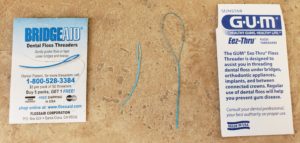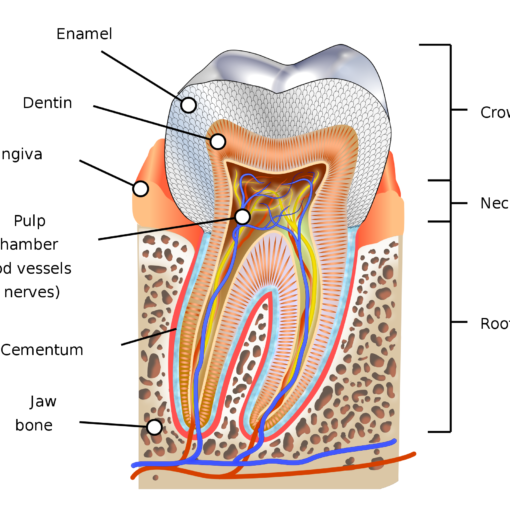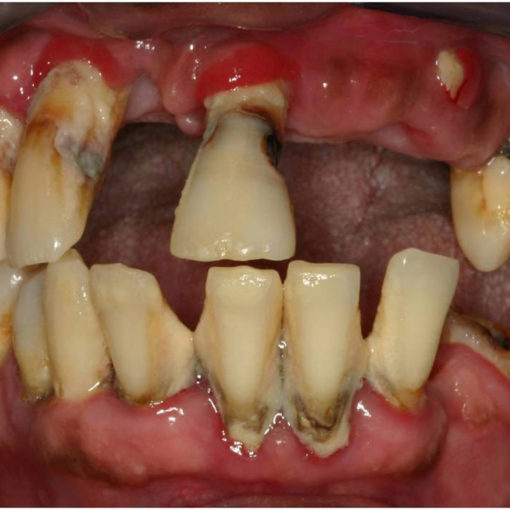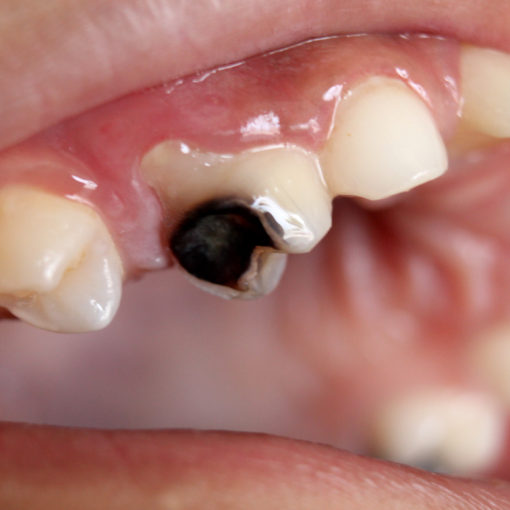FLOSS
Only floss the teeth you want to keep!
It’s easy to find one minute within a 24-hour period to floss
- In the shower
- Using flossers in the car while parked or at a red light
- While going for a walk
- Wherever you sit in the house nightly, keep floss nearby and use it when watching TV or on the computer. That way you’re a little distracted and it’s not as distressing than standing in front of a mirror.
- Keep floss in your usual places to make it convenient
The C-wrap technique is the method of choice
- Gently guide the floss through the contacts of the teeth
- Wrap the floss around the tooth forming a “C”
- Rub the floss vertically along the sides of the tooth, up to the contact then down under the gum line as far as it naturally fits
- Repeat the rubbing a few times to fully remove plaque
- This technique reaches the line angles of the tooth where the toothbrush often misses

Dental floss is a cord of thin filaments used to remove food and plaque from between the teeth. There is quite a selection of floss to choose from: multi or mono filament, waxed or non-waxed, flavored or unflavored, fluoridated or non-fluoridated, thin or broad.
Waxed
It’s sticky and removes plaque well. It’s like Velcro, tacky for the plaque to adhere to. Slightly thicker than the unwaxed.
Unwaxed
Smooth, easy to push through tight contacts or tight teeth.
Spongy
Contains multiple strands of nylon fibers, which expand during use. The thickness works great in gaps between the teeth, where ever food gets caught, around crowns, bridges and orthodontics.
Dental tape
Is broader and flatter than regular floss, which covers more tooth surface during the cleaning. This type of floss is flexible and can feel smooth between the teeth.
Satin
Smooth and easier for tight contacts.
Woven
Is thick and resembles white and blue yarn. Due to the thickness it’s meant for open contacts and space between the teeth.
Flossers
This type of structure is a plastic handle with two prongs at one end with floss attached between the prongs. These plastic flossers are beneficial for popping food out from between the teeth. They are convenient and easy to use, only one hand is needed. This type of floss structure is convenient for dexterity issues, small mouths or large hands where it’s challenging to get several fingers in the mouth.
And of course, there are a few of these to choose from:
Small flossers with the floss at one end and a plastic pick at the other end. Disposable and usually hold up for a one-time use.
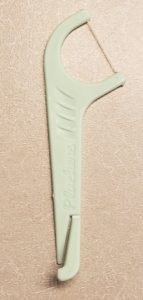
The longer flossers with the longer handle have disposable and replaceable floss. The handle lasts a long time, but the floss section usually lasts for a one-time use. With this the replicable floss heads can be purchased separately.
The stick flosser with two prongs in which you wrap the floss around the prongs yourself. The handle lasts a long time and all is needed is what ever preference of floss you prefer.

Super floss
This is a jack of all trades floss.
It has three components on one string: regular floss, spongy floss and the stiffened section at the end.
Super floss is packaged with pre-cut strands:
The regular floss section is used for flossing natural teeth with no complications.
The spongy, fuzzy section is great for wider gaps, implants and restorations such as crowns and bridges.
The stiff “needle” end is used to push under bridges and under orthodontic wires.

Floss Threaders
It’s a plastic needle. With a loop at one end and a “needle” like point at the other end. Regular string floss will insert through the eyelet part and the needle is used to push through the teeth, under the pontic (the fake tooth of a bridge), under the ortho wire or retainer bar, under splinted teeth or any areas where the contact point is too tight to floss. This technique is comparable to sewing. The needle is pushed through one side and then pulled through the other side. Once it’s through the C-wrap flossing system is used.
